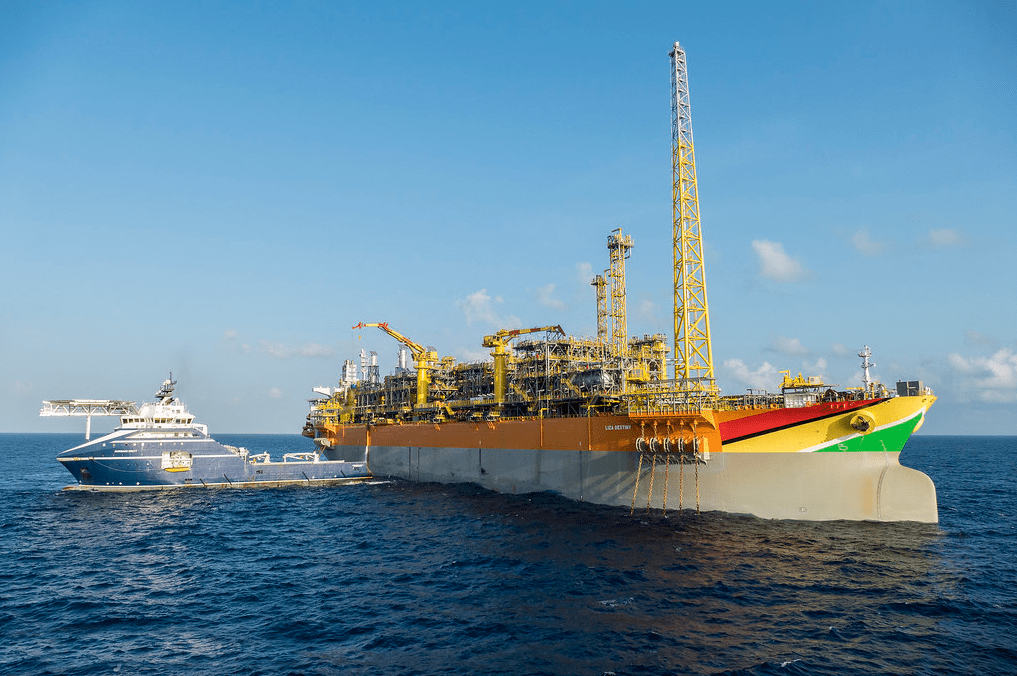The light sweet crude being produced in Guyana is poised to help meet a rise in global energy demand which the U.S. Energy Information Administration (EIA) says could increase 47% in the next 30 years, driven by population and economic growth, particularly in developing Asian countries.
Of the 47% increase in global energy demand, liquid fuel will make up 28% by 2050, compared with renewables at 27%. This assumes a 36% increase in liquid fuel demand and a 165% increase in renewables from 2020 levels. EIA sees energy-related carbon dioxide emissions continuing to rise through 2050, even as carbon intensity and energy intensity fall in both developed and developing countries.
Exxon makes new Guyana discovery, increases resource to 10 billion barrels
The 2050 projection will require increased oil and natural gas production and underscores the stark challenges ahead for transitioning away from fossil fuels and curbing global warming emissions.
Guyana, South America’s newest oil producing country, is poised to add over 1 million barrels per day before the end of the decade in a major production ramp up at its vast offshore oil fields.
So far, ExxonMobil has found approximately 10 billion barrels of oil from a string of high-profile discoveries at its largest offshore license in the country, where it is operator. The more than 80% success rate at hitting commercial oil at the Stabroek Block is unprecedented in the industry and experts say this is just the beginning.
“Stabroek is turning out to be one of the most prolific exploration success stories of all time…it’s almost unprecedented what Exxon has been able to do in Stabroek,” Schreiner Parker, Rystad Energy’s Vice President for Latin America and the Caribbean told OilNOW in a recent interview.
The U.S. oil major and its co-venturers Hess and CNOOC have been plugging significant capital in the Guyana operations where breakevens range between US$25 and US$35 per barrel, making the basin one of the most competitive deepwater regions in the world.
This comes at time when global oil and natural gas investments have fallen to record lows, particularly in 2021, although demand for both has risen alongside the economic recovery.
“Although economic and pandemic-related uncertainties and expected OPEC+ output increases have also likely impacted prices, the lack of investment for oil and natural gas production is an ominous sign, given that major conventional global oil and natural gas projects can take years to start producing,” writes Chief Economist at the American Petroleum Institute (API), Dr. Dean Foreman, in a recent analysis. “We could be in for global oil market tightening in 2022 and further upward pressure on prices, with prices already at their highest level since 2014,” he said.
Rystad Energy has said by the year 2050 it expects oil demand to be around 55 million barrels a day, although this could change with a rapid advancement in battery or other similar technology. Long-term supply sources will come from offshore provinces such as Guyana that have a combination of factors which allow them to be economic in a supply scenario in 2050. These include low-breakeven cost and a competitive fiscal regime that incentivizes production.
“The other thing that offshore provinces have at play is that you’re usually talking about huge reserves and assets that will produce for 30 years or more,” Parker said. “So, when I think about the 2050 supply table and who is able to kind of sit there, it’s these low breakeven, good IOR projects that have the length and the longevity to produce for 30 years. I think offshore Guyana and the [Brazil] presalt are two places where those conditions are both necessary and sufficient.”




